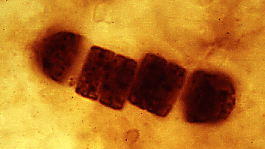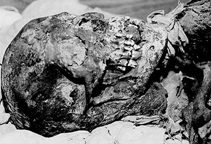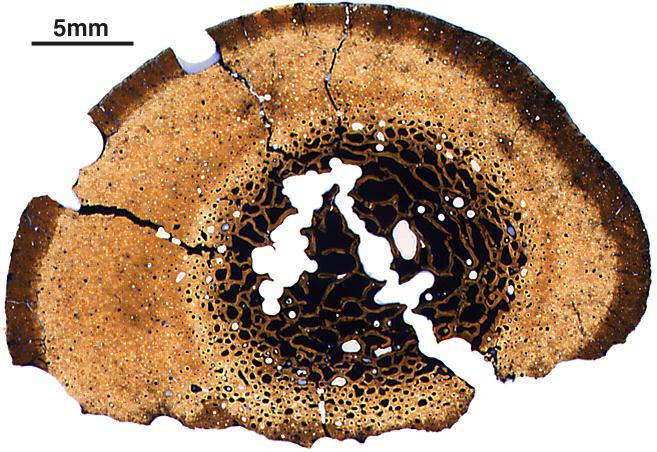The presence of bacterial microfossils in mummified remains helps an archaeologist to determine the cause of death.
Cyanobacteria
Scavenging microorganisms can be found fossilized in mummified flesh. This gives evidence as to the way in which the body was buried.
A fossilized Hicetes innexes, a scavenger worm, is a good example. It would have tunneled into the partly dead and partly living tissue surrounding the skeleton, then been fossilized. That provides an archaeologist with an idea of the span of time that the body was exposed before burial.
Mummified Skull of Amenhotep III
Parasitic microorganisms can be fossilized with their prey. Some types of parasites are only parasitic to one kind of animal. An archaeologist can make associations between a microfossil and the animal bones surrounding it, leading to an identification of the surrounding bones.
Dinosaur Bone


